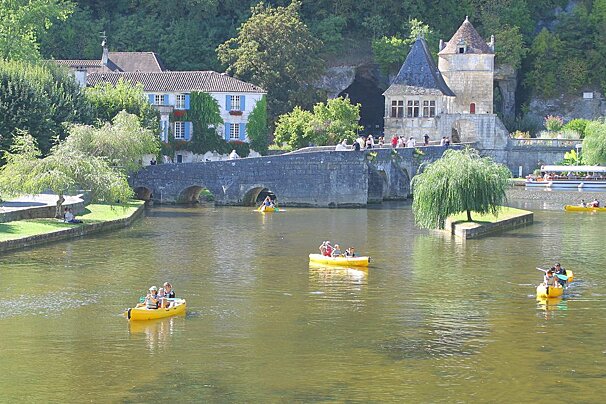
Brantome Canoe, Brantome
Not only can you take a relaxing journey down the Dronne river in a canoe but you can try your hand at stand up paddle boarding or take to the cliffs and trees for some adventure above ground.
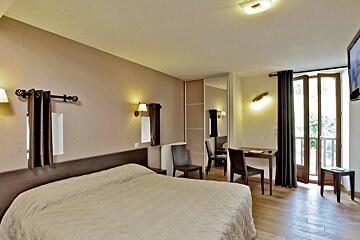
© Hostellerie Du Perigord Vert Hotel, Brantome
Modern simplicity in picturesque Brantome
A tranquil retreat just a short distance from the centre of Brantome and beautiful Abbey. It has basic contemporary rooms equipped with a TV, Wifi and great views into the hotels garden and swimming pool.
The Hostellerie du Perigord has a total of 23 rooms and allows for a configuration to suit virtually any requirement. There are also 2 rooms which can accommodate those with a disability.
A typically French breakfast is available to you each morning for a small charge and comprises of toasts, pastries, yoghurts, fruit and hot drinks. You can make the most of the on site restaurant and stay half-board.
A spacious heated outdoor pool can be relished at the end of a days exploration or why not find a spot of shade on a sun lounger with a book or in good company?
A meal typical of the region can be enjoyed in the spacious dining room or outside under the mulberry trees in the summer. Duck and foie gras are of course included in this all French affair and a selection of regional wines can be chosen to match.
It is open everyday for dinner except Fridays and is open for lunch on a Sunday.
All children are welcome and those under 2 can stay free of charge when using a cot.

Not only can you take a relaxing journey down the Dronne river in a canoe but you can try your hand at stand up paddle boarding or take to the cliffs and trees for some adventure above ground.

Set in an inviting tranquil hotel just a short distance from the centre of medieval Brantome. A meal typical of the region including duck, foie gras and of course truffles can be enjoyed in the spacious restaurant or under the mulberry trees on the terrace in the summer.

Within the hotel grounds of the picture perfect Moulin de l'Abbaye hotel, set alongside the River Dronne and with a dining room oozing class and a waterside terrace with shaded trees, it would be difficult to find a spot in the world more idyllic than this!
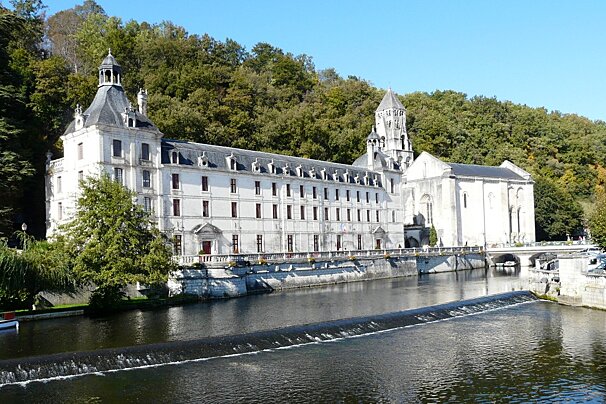
With one of the oldest bell towers in France this abbey is set into the cliff face and overlooks the Dronne river, a beautiful centre piece to this delightful town.
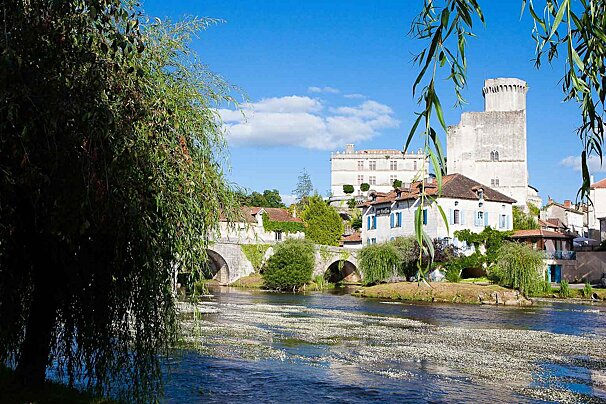
This château is the combination of two castles, a medieval one dating to the 13th century and a Renaissance palace dating to the 16th century.
Learn about the famous "Truffles of Périgord" at this living museum which describes the process of truffle cultivation in an old farmhouse in the truffle-growing village of Sorges. As well as the museum, there is a tour taking you along a three kilometre trail, over the limestone plateaux which is responsible for the excellent truffles of the region.

The museum of art and archaeology houses an excellent prehistoric selection of findings and skeletons from the region.

Today there are only a few remaining elements of the old Roman town which was located at Périgueux.
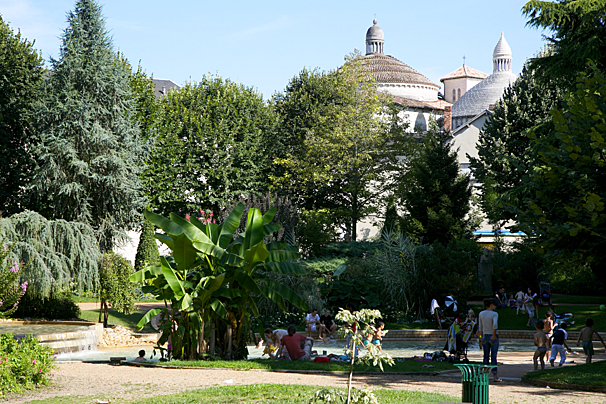
These gardens are home to the remaining elements of the vast Roman amphitheatre which housed over 20,000 people in the 1st and 2nd centuries.

Located on an ancient Roman road, the town of Brantôme on the Dronne river is centred around its 8th century Benedictine abbey.

The pretty old town of Montignac serves as a good base for visiting the nearby prehistoric caves.

The relaxed town of Le Bugue sits on the river Vézère where it's joined by the Doux. A more tranquil base for exploring the region, it has some pretty, narrow streets and a bustling market twice a week.
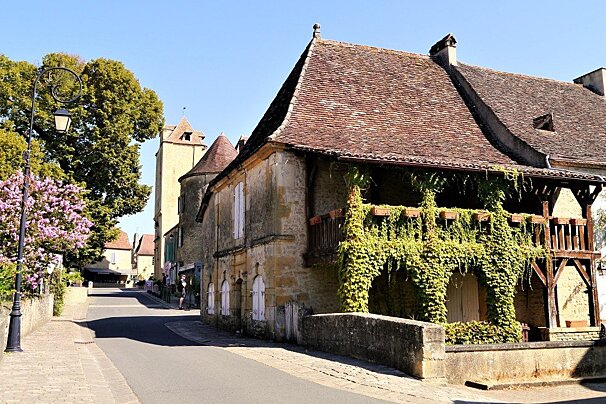
Trémolat was originally home to a 6th century hermit, Saint-Cybard, before monks built their monastery here in the 9th century.

Limeuil is a picturesque old village which features on the list of 'Les Plus Beaux Villages de France'. It has a pretty park on the top of the hill and some ruins from its medieval past.

The town and the surrounding prehistoric sites have been designated a UNESCO World Heritage site. Nearly 150 sites have already been discovered and contain significant finds dating back as far as the Middle Stone Age - about 300,000 to 40,000 years ago.